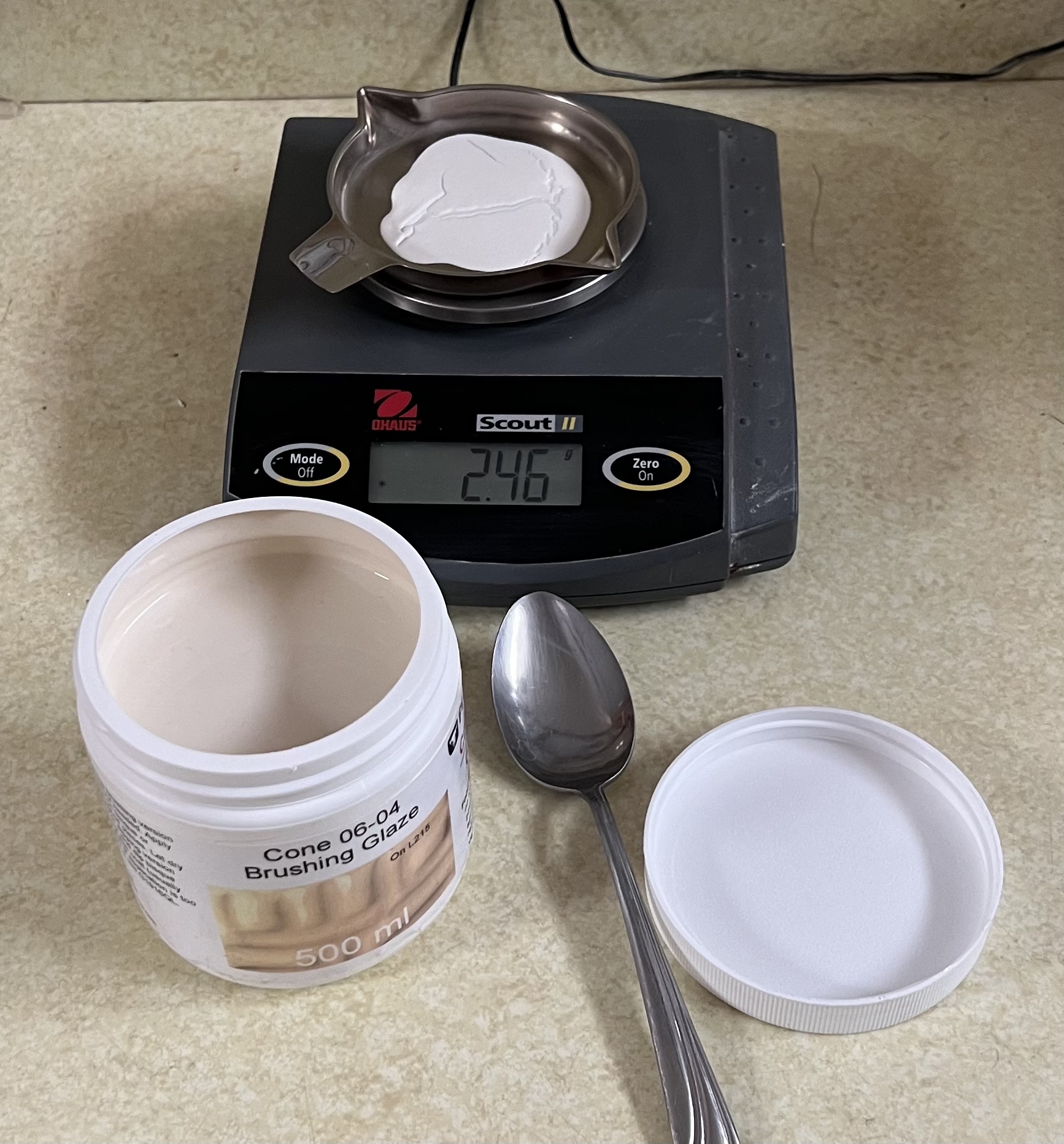| Monthly Tech-Tip | No tracking! No ads! | |
Water Content
Percentage of water is an important property in ceramics. It affects working characteristics. It helps to explain them.
Plastic clays exhibit ideal working properties inside a narrow window of water contents. For example, a 25 porcelain might be good between 21.0 and 21.5% water for the potter's wheel whereas 19% is needed for RAM pressing.
Casting bodies often target a specific gravity of 1.75 to 1.8 (higher specific gravities having lower percentages of water). This range implies a specific window of water content.
Dipping glazes work best at a specific percentage of water, the rheology is adjusted from there using additives. Brushing glazes usually target a higher water content to have good brushing properties (not go on too thickly, not dry too fast).
The water percentage in raw clay lumps needs to be below a threshold to make them grindable. The amount of water in clay powders (and other minerals) determines their flow properties.
Raw minerals have an LOI, water is part of their chemical structure.
Water content can be measured by weighing a sample and drying it out (or firing it in the case of LOI), and weighing it again. The %water is calculated by:
(wet weight - dry weight) / wet weight * 100
Related Information
Testing the water content of a ceramic glaze

This picture has its own page with more detail, click here to see it.
In this case I need to know the water content of a glaze to know how many grams of CMC gum to add to achieve a 0.5% addition (to improve brushing properties). I put a teaspoon of the glaze (well stirred) on the tray. It weighed 5.04g (this 0.01g scale is accurate to 1/100th of a gram). Then I dried it under a heat lamp and now it weighs 2.46g. The water content of the slurry is thus (5.04 - 2.46) / 5.04 * 100 = 51.2%. That means the solids content is 100 - 51.2 = 48.8%. I want to blender mix 0.5% CMC into this brushing glaze (because it is drying too fast). The jar with glaze weighs 680g and the jar itself weighs 35g. Thus 680-35=645. 48.8% of 645 is 315g of powder. 0.5% of 315 is 315 * .005 = 1.6g of CMC gum.
Links
| Tests |
LOI/Density/Water Content
LDW LOI, density and water content test procedure for plastic clay bodies and porcelains |
| By Tony Hansen Follow me on        |  |
Got a Question?
Buy me a coffee and we can talk

https://digitalfire.com, All Rights Reserved
Privacy Policy
